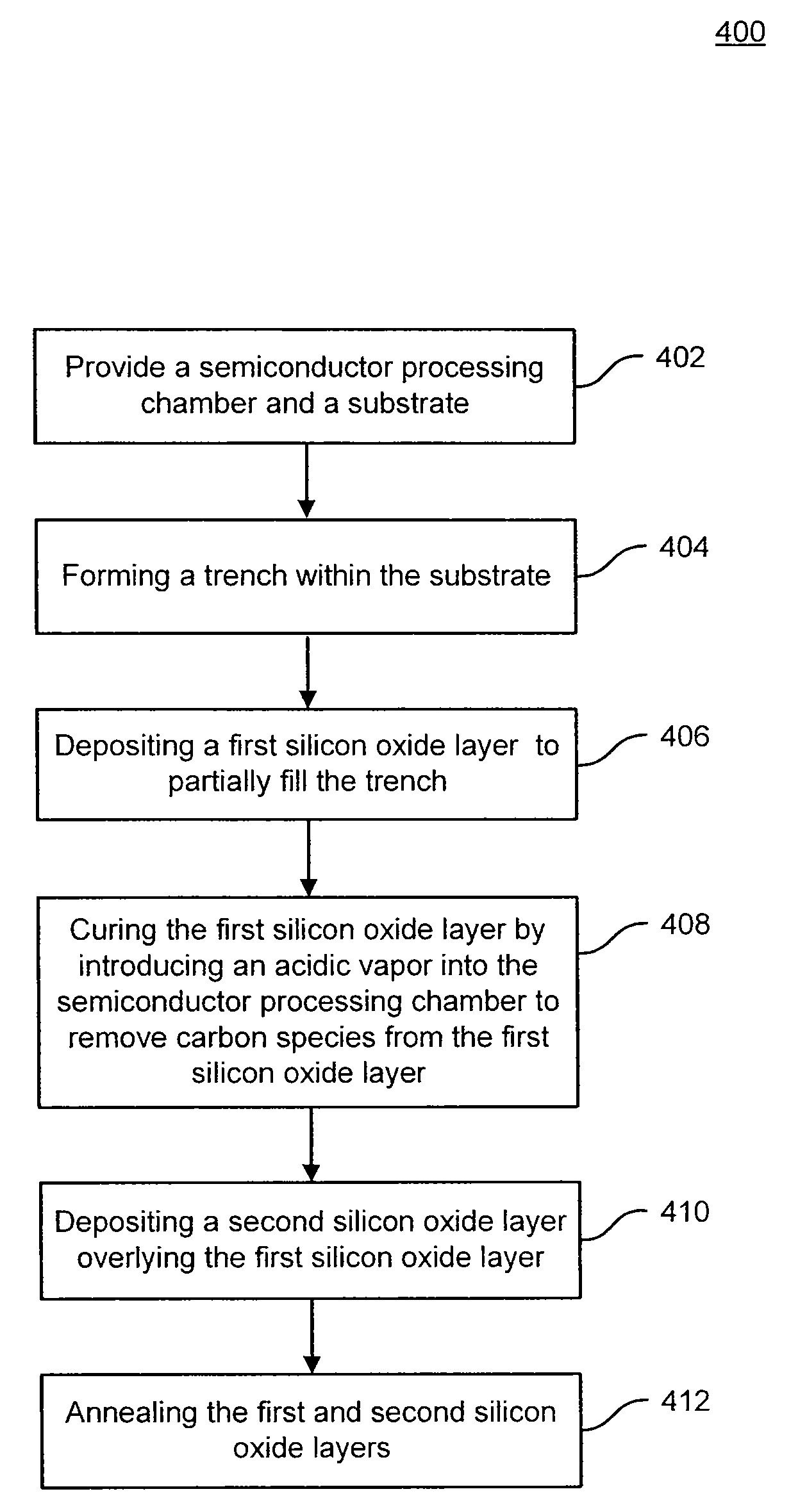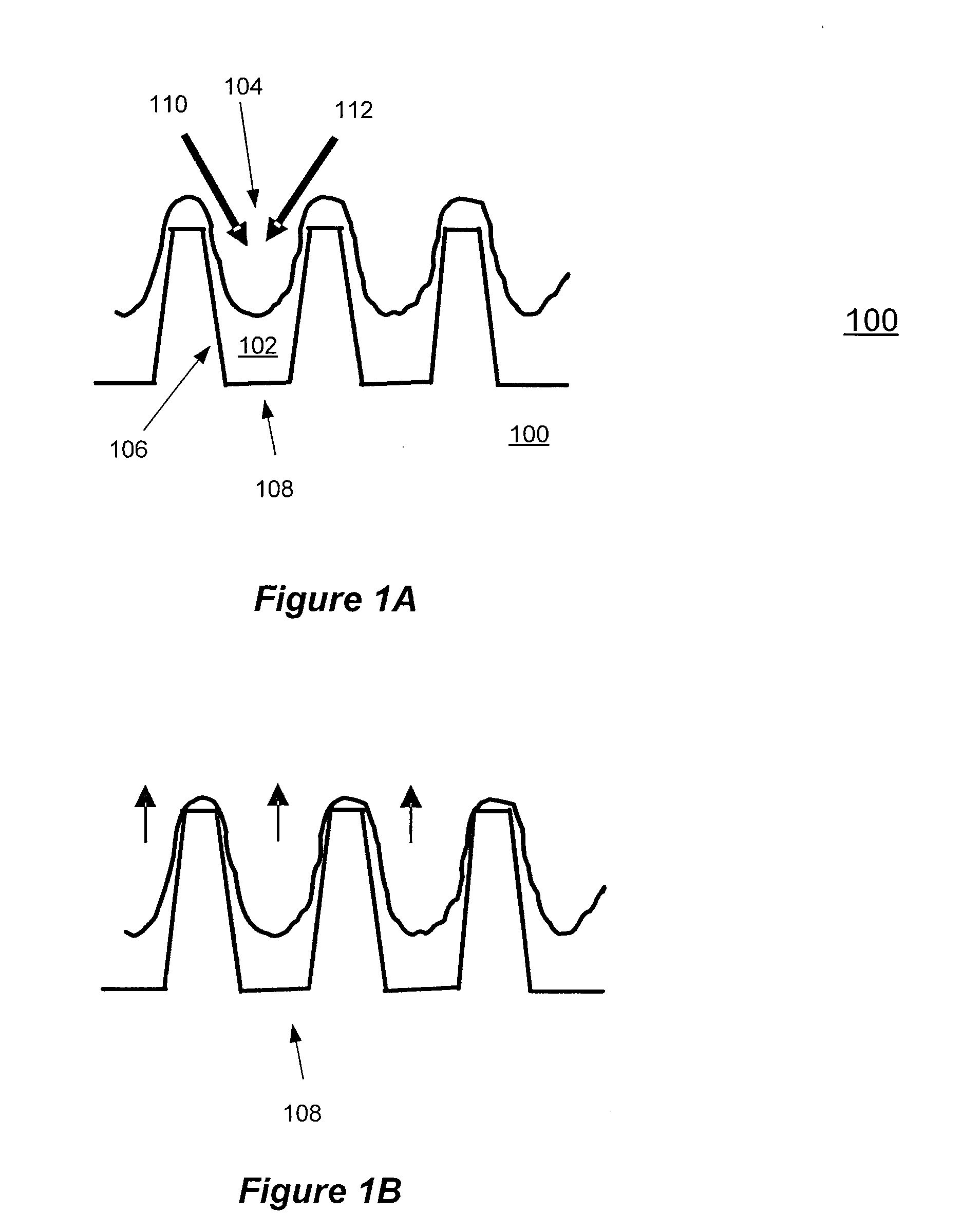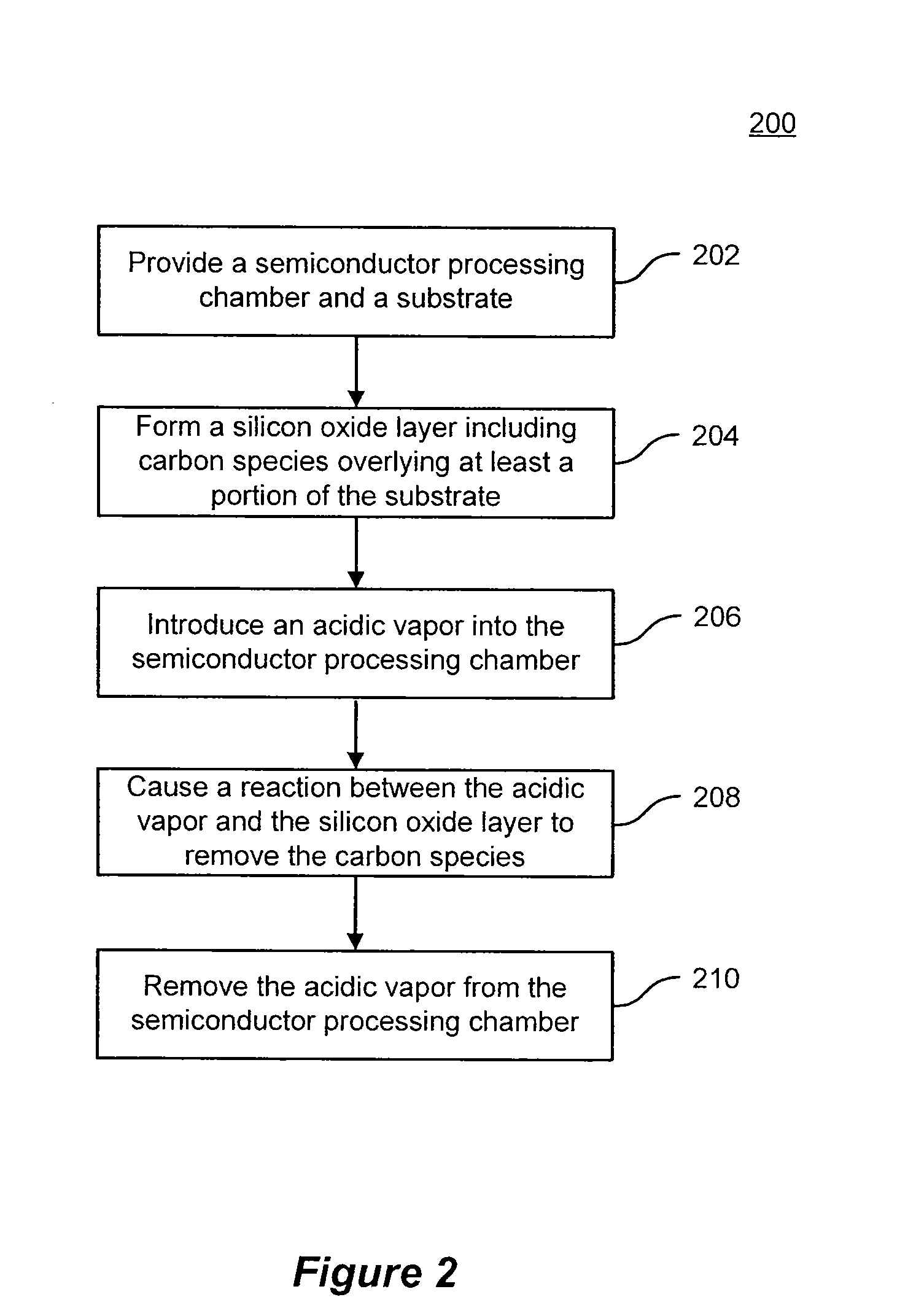Curing methods for silicon dioxide thin films deposited from alkoxysilane precursor with harp ii process
a technology of alkoxysilane and curing method, which is applied in the direction of semiconductor/solid-state device manufacturing, basic electric elements, electric apparatus, etc., can solve the problems of large height-to-width gap, fabrication problem, and difficulty in completely filling gaps and trenches in these structures without creating
- Summary
- Abstract
- Description
- Claims
- Application Information
AI Technical Summary
Problems solved by technology
Method used
Image
Examples
Embodiment Construction
[0023]Systems and methods are described for curing a silicon layer with high flowability using an acidic catalyst to complete reactions in the as-deposited layer. Unwanted, residual species such as unreacted carbon groups present as a byproduct of the silicon layer deposition process can be removed from the silicon layer by curing the as-deposited silicon layer with an acidic catalyst. The catalyst aids in the removal of the unreacted carbon groups by helping to complete reactions in the as-deposited layer. The curing process allows for dense silicon oxide films having an improved wet etch ratio and gap fill capability for high aspect ratio trenches.
[0024]The methods of the invention include generating the acidic catalyst as an acidic, aqueous vapor. The acidic catalyst may be introduced directly into the semiconductor processing chamber as a gas such as hydrogen chloride (HCl) or generated in situ by using different precursors such as chloro-siloxane or acetoxy-siloxane. The additi...
PUM
| Property | Measurement | Unit |
|---|---|---|
| atmospheric pressure | aaaaa | aaaaa |
| temperature | aaaaa | aaaaa |
| vapor pressure | aaaaa | aaaaa |
Abstract
Description
Claims
Application Information
 Login to View More
Login to View More - R&D
- Intellectual Property
- Life Sciences
- Materials
- Tech Scout
- Unparalleled Data Quality
- Higher Quality Content
- 60% Fewer Hallucinations
Browse by: Latest US Patents, China's latest patents, Technical Efficacy Thesaurus, Application Domain, Technology Topic, Popular Technical Reports.
© 2025 PatSnap. All rights reserved.Legal|Privacy policy|Modern Slavery Act Transparency Statement|Sitemap|About US| Contact US: help@patsnap.com



